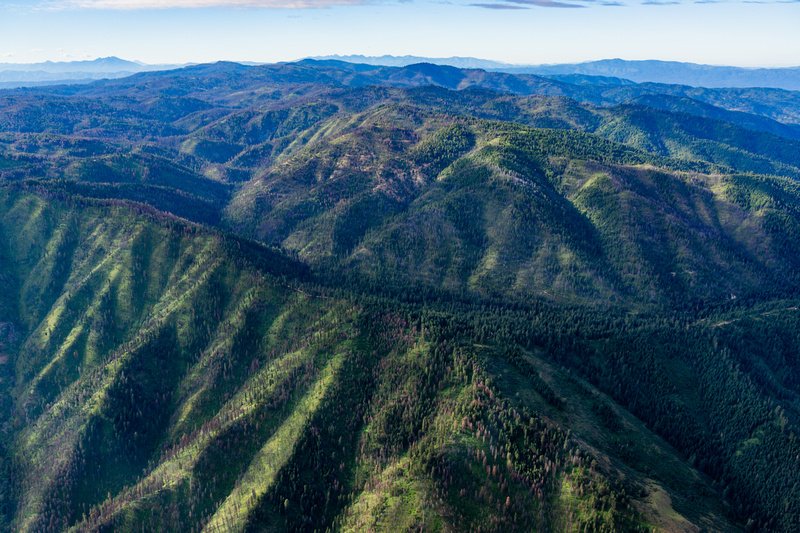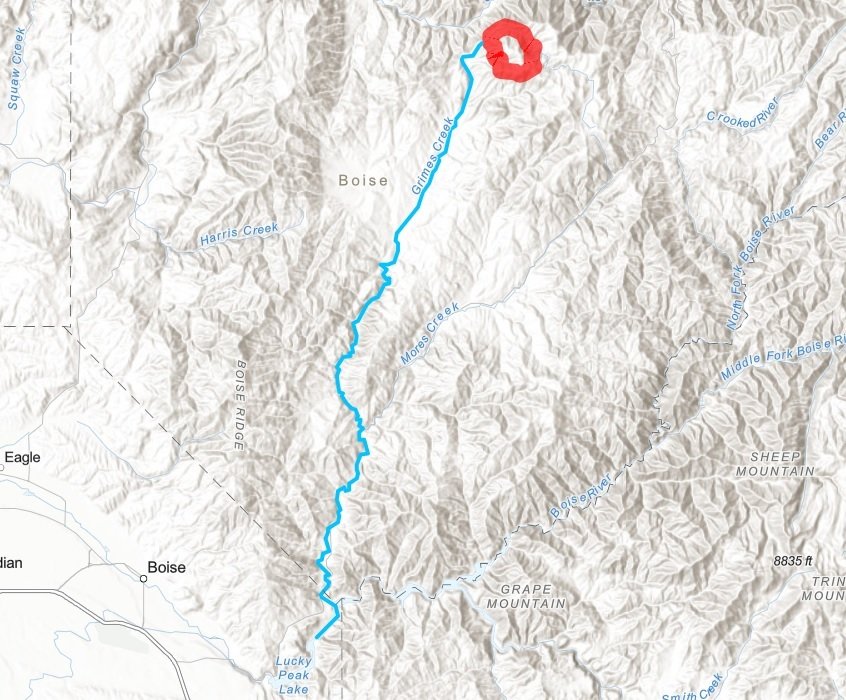
The CuMo Mining Exploration Project
The 2023 CuMo Mine Exploration Project has the goal of constructing one of the world’s largest open-pit copper & molybdenum mines in the headwaters of the Boise River.
The Boise watershed is threatened by the CuMo mining exploration project… again.
Since 2010, there have been several attempts to explore and develop the molybdenum, copper, and silver deposits at the headwaters of Grimes Creek in the Boise foothills. By 2017, thanks to the hard work of Idaho Rivers United, our conservation partners, and a vocal public opposition, a federal judge has twice put a halt on exploration proposals, sending the projects back to the U.S. Forest Service for further analysis of potential impacts on water quality and a rare endemic plant not found outside the Boise basin – the Sacajawea’s Bitterroot.
Since 2018, the project had apparently gone dormant with no updates from either the company or the Forest Service regarding the additional environmental analysis or changes to the submitted plan of operations. That all changed in October of 2023 when the Forest Service announced that a new exploratory plan had been submitted, once again placing the Boise River watershed and a significant portion of Boise’s drinking water under threat.
MORE RESOURCES
A link to the webinar from 10/23
A link to Take Action for reform to the Mining Law of 1872
A link to the Forest Service project page where you can learn more and also COMMENT HERE TO SAY NO TO CUMO.
For other organizations that are working to stop CuMo, please check out our partners: Idaho Conservation League, Advocates for the West, Golden Eagle Audubon, & Idaho Chapter of the Sierra Club
An aerial view of the CuMo project, near the headwaters of the Boise River. Photo credit: EcoFlight
Image of the project site and drainage path down Grimes Creek towards Lucky Peak Reservoir.
If ICC has its way after exploration, the headwaters of the Boise River would be detrimentally transformed by one of the largest open-pit copper mines in the world. It was identified in a previous Preliminary Economic Assessment that the ultimate goal for ICC is to construct a 3,500-foot deep open pit to mine copper and molybdenum. The analysis additionally outlines the potential for a massive tailings facility (around 800’ high and 10,000 feet wide) to be built upstream of Pioneerville, Centerville, and New Centerville if the current mining plans stay as is and are approved after exploratory drilling.
The CuMo mine has the potential to become one of the most controversial mining projects in the United States. It places the drinking water, recreation resources, and habitat that the Boise River provides at stake.
-
If the Idaho Copper Corporation (ICC) has its way the headwaters of the Boise River will be transformed by the largest open-pit copper mines in the Americas if not the globe. The CuMo mine has the potential to become one of the most controversial mining projects in the United States and places the drinking water, recreation resources, and habitat that the Boise River provides at stake.
The CuMo project is proposed for a forested ridge on the south side of Grimes Creek upstream of Pioneerville and Idaho City, only 35 miles from Boise. While the project is in the Boise River watershed, it's just a stone's throw from Garden Valley and the South Fork of the Payette River.
The project is still in its relatively early exploration phase and is calling for four years of drilling followed by two years of final reclamation. To accomplish their exploration goals, ICC is proposing the construction of 8.9 miles of new temporary roads, constructing 122 drill pads, and ultimately drilling up to 250 exploratory drill holes.
It was identified in a previous Preliminary Economic Analysis that part of the ultimate goal of this project is to construct a 3,500-foot deep open pit in order to mine the metals. The analysis additionally outlines the potential for a massive tailings facility (around 800’ high and 10,000 feet wide) to be built upstream of Pioneerville, Centerville, and New Centerville if the current mining plans stay as is and are approved after exploratory drilling.
With the site being just 15 miles from Idaho City and upstream of one of Boise’s primary drinking water supplies, it is critical that the public be made aware of the proposal and how it could impact water quality as well as wildlife and recreation within the area.
-
In May 2011, after receiving more than 500 comments from concerned citizens, the U.S. Forest Service released the Final Environmental Assessment for the CuMo Exploration Project and issued a Finding of No Significant Impact.
The decision permitted the Canadian mining company, then Mosquito Gold Company, to conduct a five-year mineral exploration project, including the construction of up to 10.2 miles of new temporary roads and four new stream crossings.
In July 2011, Idaho Rivers United, along with the Idaho Conservation League and Golden Eagle Audubon Society, filed a complaint challenging the Forest Service's approval of the CuMo Exploration Project. Advocates for the West represented our claim that the Forest Service had not evaluated what impact the road construction and the extensive drilling activities will have on groundwater and on sensitive species in the project area, including wolverines, northern goshawks, and Great grey owls.
On August 29, 2012, U.S. District Judge Edward J. Lodge found that the U.S. Forest Service’s actions were “arbitrary and capricious” when it approved the CuMo Exploration Project without examining potential effects to groundwater. He remanded the agency’s environmental document for further study and consideration and halted all exploration activities that were previously permitted under the plan.
Following this case, the Forest Service performed additional analysis and baseline studies to address the deficiencies in groundwater impacts and published a Supplemental Environmental Assessment in 2015. Following this release, IRU joined ICL and Golden Eagle Audubon Society to challenge the assessment and once again the courts found that the assessment was lacking. This time, it was determined that the groundwater analysis had been improved, however, the analysis was deficient when examining the impacts to Sacajawea’s Bitterroot.
In 2018 the Forest Service launched their third round of analysis for the CuMo project specifically to address the deficiencies outlined in our most recent challenge and to address baseline condition changes resulting from the Grimes Creek and Pioneer fires that impacted the area between rounds of study.
These studies were never completed and the project remained in question until this most recent proposal was submitted. Despite yet another change in ownership and a pivot to focus on copper rather than molybdenum deposits, the submitted plan and threat to the Boise River watershed remain unchanged.




